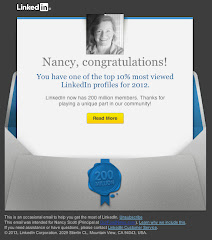Still, this logo means something to me. It visually encapsulates my total experience with Ping. I see the logo and I see (no matter how subconsciously), the slick, lean atmosphere, the friendly staff, the famous “Lucky 8” lunches, a terrific make-you-happy hour, very fresh vegetables, and the chef’s “way with food.” As soon as I see Ping’s logo, the entire dining experience comes to me in an emotional wave. I don’t break down the components, but I “feel good” about it.
That’s branding.
A company logo is the single most salient representation of any company. For us customers, everything we think, feel, and have experienced with a company gets all tied up in that single visual – the logo.
So how do customers feel when a company rebrands with a new logo? That depends, of course, on whether anything about the company has really changed. You see, to us customers, that’s what a new logo means -- that something has changed. A company is new, different, better, more contemporary…blah, blah, blah. Why else bother?
Strangely – or maybe obviously -- this little bit of marketing persona – a logo -- is the favorite “mess around” venue of marketing executives, consultants, and new CEOs who may be looking to brand themselves through the extensive corporate “rebranding” process.
If that’s the case – if a company hasn’t really changed – we customers will know because we've already decided who you are now.
Look, customers have a feeling about your company. As with my Ping example, our full experience with a product or service is embodied and connected to the corporate logo. Whether we like you or not, we see your logo and we feel it. We figure the only reason you'd change your logo is to change our minds about who you are, right?
So, a new corporate logo is a promise to both old and new customers. You can say whatever you want, advertise whatever you want, posture in any way you want. We will decide if you’ve changed. If you haven’t, we’ll never trust you again.
And that’s the truth.
--scrubbed by Marketing Brillo
